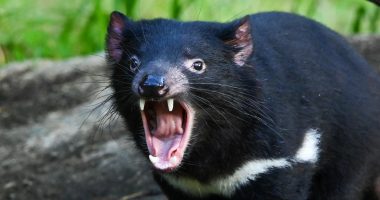
DUBAI—State oil giant Saudi Aramco said Sunday its 2021 net profit more than doubled to $110 billion, a boon to the Middle East’s largest economy as it seeks to use its hefty profits for investment opportunities domestically and abroad.
The world’s largest oil exporter is benefiting from rapidly rising oil prices and said it raised its spending target this year as demand surges and the impacts from the pandemic recede. Brent crude, the global oil benchmark, surged to an average of $70.86 a barrel last year after falling to an average of $41.96 a year earlier. It settled Friday at $107.93 a barrel, down 4.2% for the week. Early this month, oil at times traded above $130 a barrel.
Aramco’s income jumped 124% in 2021 from $49 billion a year earlier, due to higher crude oil prices, stronger refining and chemicals margins and the consolidation of the full-year result of its chemicals business, known as Sabic, the company said. It is the highest net income Aramco has posted since it started trading its shares on the domestic stock exchange.
Aramco shares jumped earlier in the day to 43.85 Saudi riyals a share, valuing the company at $2.34 trillion.
The Saudi government, with a stake of more than 94% in Aramco, has sought to monetize the country’s massive oil assets and use the proceeds to invest in industries outside of oil as part of Crown Prince Mohammed bin Salman’s plan to restructure the economy by 2030.
To help meet that goal, Prince Mohammed has tasked the Public Investment Fund to invest in companies and industries untethered to hydrocarbons. The government also transferred the $29.4 billion it raised from Aramco’s initial public offering on the Saudi stock exchange in 2019 to the PIF to deploy.
Last month, the Saudi government said it transferred Aramco shares worth about $80 billion to the PIF as part of efforts to diversify the kingdom’s hydrocarbon-dependent economy.
The fund has used the cash it has received or raised in the past few years to invest in a diverse set of businesses such as electric-vehicle manufacturer Lucid Motors Inc., Citigroup Inc. and the Premier League soccer club Newcastle United.
It also has played a more-active role in the global markets after receiving $40 billion from the kingdom’s reserves in early 2020. It plans to invest another $10 billion in listed stocks this year, according to people familiar with the fund’s plan.
Aramco’s results came a few hours after a Saudi-led coalition said Iran-backed Houthi forces in Yemen fired missiles and drones at Aramco energy and water desalination facilities late Saturday and early Sunday.
The missiles and drone attacks were fired at a water desalination plant in Al-Shaqeeq; a distribution station in Jizan; a liquefied natural gas plant in Yanbu; a power station in Dhahran al Janub; and a gas facility in Khamis Mushait. Aramco said there were no casualties or impact on its supplies, while the coalition said the strikes damaged civilian vehicles and homes in the area.
The Houthis claimed responsibility for the attacks, which a spokesman said were in response to “the continued aggression and unjust siege of our people.”
Later Sunday, the coalition said an Aramco petroleum products distribution plant in Jeddah also was attacked by the Houthis, leading to a “limited fire” in one of the tanks. The fire was brought under control and no casualties have been reported.
Despite Aramco’s surge in profits and soaring oil prices, Aramco said it would maintain paying a quarterly dividend of $18.75 billion for the three months ended Dec. 31. Analysts have said that with higher crude prices, Aramco should increase its payouts or opt for special dividends to make shares more attractive to foreign investors if the company opts for a future stake sale.
Aramco’s dividend commitment has been a bellwether for energy investors—a large, recurring payout the company promised to make in a bid to lure investors to its long-delayed IPO in 2019.
The company, however, said it would recommend issuing one bonus share for every 10 shares owned.
Free cash flow came in at $107.5 billion last year, significantly higher than $49.1 billion in 2020, while net debt as a percentage of total market value, its preferred metric for borrowing, fell to 14.2% at the end of 2021 from 23%.
Aramco plans to increase capital expenditure to between $40 billion and $50 billion this year, compared with $32 billion in 2021. It has previously said it would complete its 1-million-barrels-a-day oil output expansion project by 2027 to bring its total production to 13 million barrels a day.
“Substantial new investment is required to meet demand growth, against a broader decline in upstream investment across the industry globally,” Aramco said on Sunday.
Write to Summer Said at [email protected]
Copyright ©2022 Dow Jones & Company, Inc. All Rights Reserved. 87990cbe856818d5eddac44c7b1cdeb8








